Temmangu shrines deify Sugawara Michizane, who is famous as a god of literature, and there are many (about 12,000 shrines or more) Temmangu shrines in Japan. Among them, Kitano Tenmangu shrine in Kyoto and Osaka Temmangu shrine are worshiped at by many people, especially students taking exams, and are visited to pray for success in an entrance exam. Both shrines have a long history and have many historical and interesting buildings in their precincts; this time, however, I focused on the plum blossoms in the shrines.
Sugawara Michizane, the enshrined deity of the Temmangu shrine, loved plum blossoms deeply. When he was relegated and resulted in exile to Dazaifu in Kyushu from Kyoto, he gave his poem (a tanka, a Japanese poem of thirty-one syllables) to a plum tree in his garden
“My dear Prum, send your scent to me on the spring breeze. Be aware spring has come even though I’m not with you”
unwilling to part from it. The plum tree listening his poem flew from Kyoto to Dazaifu on the day Michizane reached Dazaifu, and took root there. This is the famous legend of Tobi-Ume (Flying Plum Tree). As shown in the legend, the reason in which every Temmangu shrine has plum trees is that Michizane deeply loved plum blossoms.
Kitano Temmangu Shrine
Kitano Temmangu Shrine in Kyoto is one of the two head shrines of about 12,000 Temmangu shrines in Japan. Sugawara Michizane, moved to Dazaifu, was so disappointed and died there. After his death, many disasters such as lightning strikes and fires happened one after another. The Imperial Court at that time, considering the disasters as an evil consequence by Michizane and being afraid of it, built a shrine building for comforting Michizane’s spirit in 947 in that area. This is the legend of the beginning of Kitano Temmangu Shrine.
After passing through Ichinotorii gate and the two-storied gate, you’ll see some shrine buildings including a Kaguraden hall and a treasure house. There were many plum trees around there. The image of the cow looked somehow to be in good mood under plum blossoms.
Let’s go into the plum garden. The garden has an area of about 6.5 hectares and 1500 trees of 50 kinds of plum trees in it. The plum blossoms begin to open after the new year and we can enjoy the blossoms until the end of March. This plum garden is usually opened from the early part of February, and many kinds of blossoms such as white, red, double-petaled, and single-petaled plum blossoms come out. Some walkways run in the garden, and I could explore slowly and relaxedly the garden because there were not many people in the garden when I went there. I felt that the plum blossoms in the garden opened at about 30% of full bloom.
The plum tree in front of the main shrine on the left side is the famous Tobi-Ume (the flying plum). A plum tree blooming red flowers in Michinaze’s garden was moved to this place, and the tree has been passed on from generation to generation by grafting.
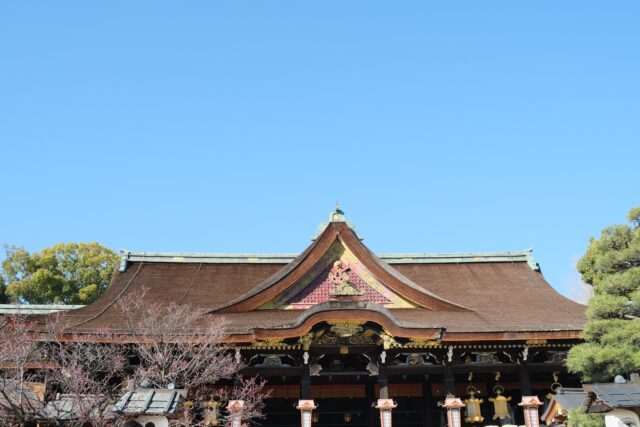
Plum buds on the tree largely expanded but, unfortunately, the blossoms had not opened yet on the day I visited.
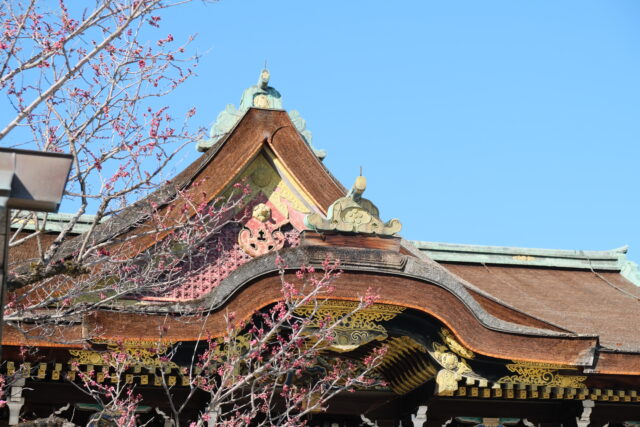
Kitano Temmangu Shrine has plum trees not only in the plum garden but also in other areas in the precincts, for example, gardens on the north side of the plum garden, areas in front of auxiliary shrines and subordinate shrines of Kitano Temmangu Shrine. I could enjoyably a stroll among trees in full bloom and trees with just buds, depending on the sunshine.
Osaka Temmangu Shrine
Sugawara Michizane, moving to Dazaifu, visited Taishogun Shrine built in the Nara period, on his way to pray for the safety on his trip. After his death, strange affairs often happened in the shrine The Emperor at that time gave an imperial command to build a Temmangu shrine (Osaka Temmangu Shrine) deifying the spirit of Michizane in the area where Taishogun Shrine stands. This is the story of the beginning of Osaka Temmangu Shrine. Since then, the Shrine has received the adoration of people for more than 1000 years.
The most famous event in this shrine is an exhibition of plum bonsai (dwarfed plum tree in a pot) held in February. The exhibition is held in Sanshuden Hall (an assembly hall of the shrine) which is a Shoin-zukuri style (a traditional style of Japanese residential architecture) having a large hall with 100 tatami mats, in which various kinds of precious plum trees including treasured 200- or more year old plum trees are exhibited. In addition to the plum bonsai itself, the collaboration of a plum bonsai and a painting, furniture or a fixture such as a shoji screen is also worth seeing. The way to show the bonsai in the room includes exhibitions to show them by outside light, or only by light within the room, and both had a good taste.
Please enjoy the plum bonsai exhibition.
The plum trees planted in the ground also made white and red flowers in the precincts of the shrine.


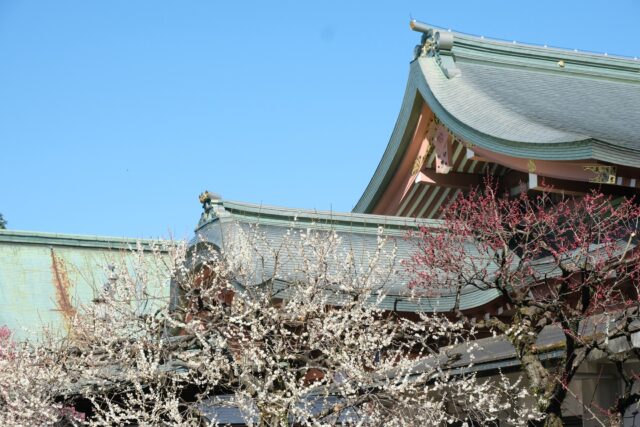
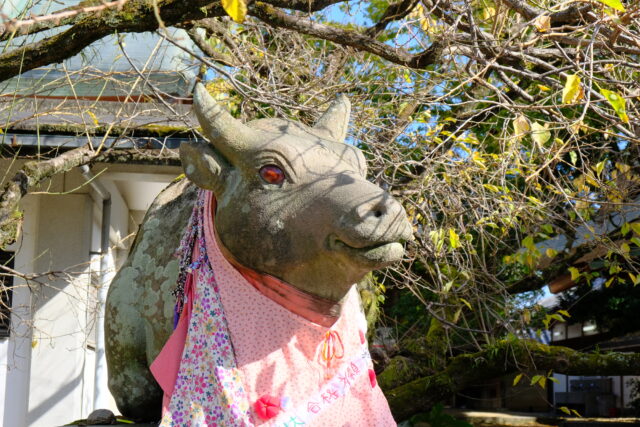
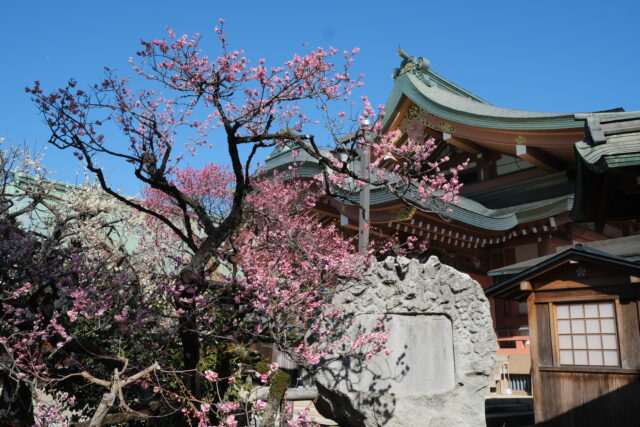
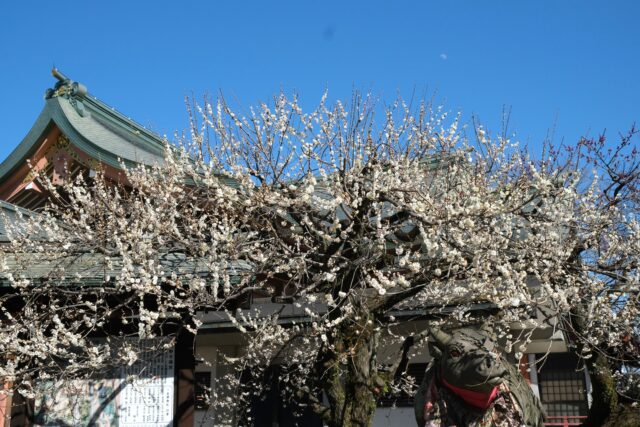
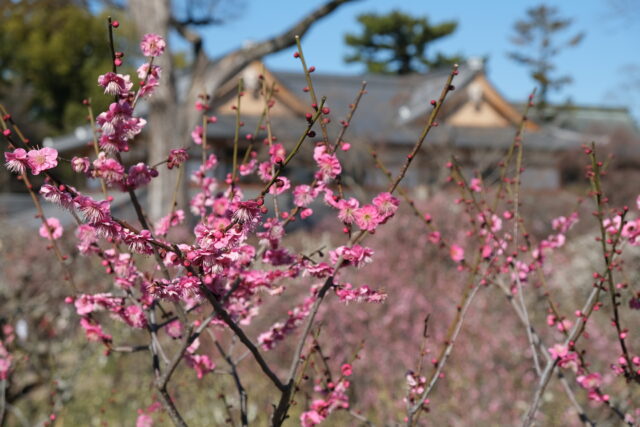
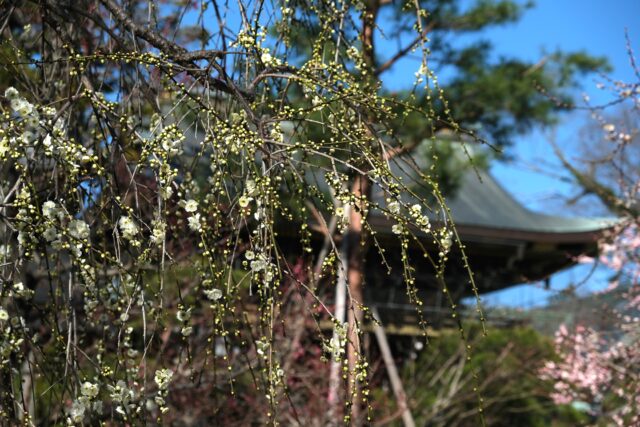
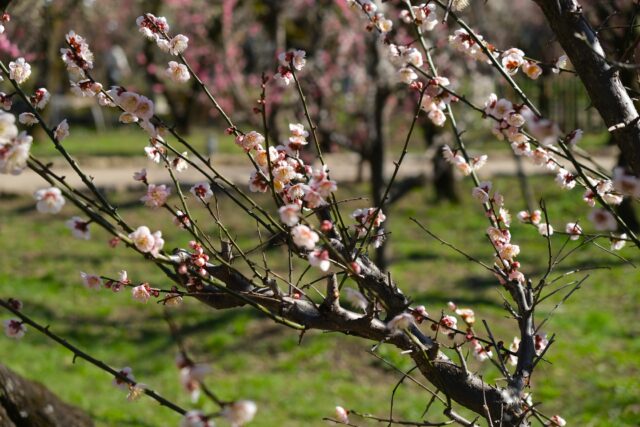
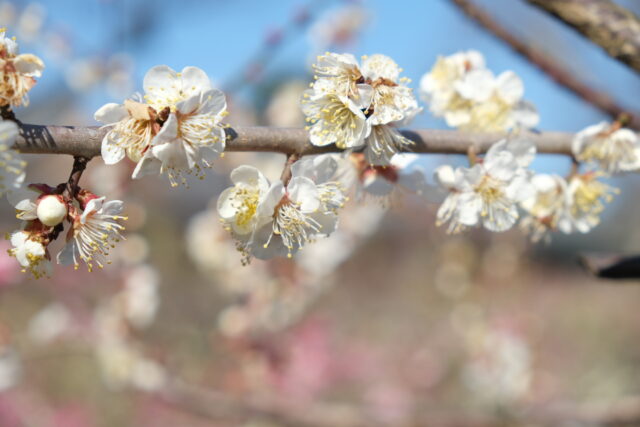
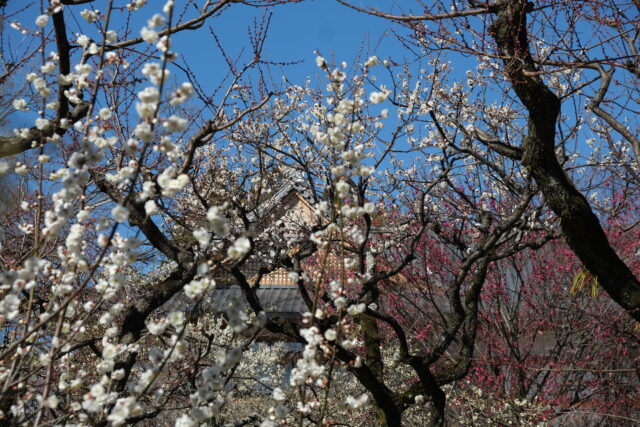
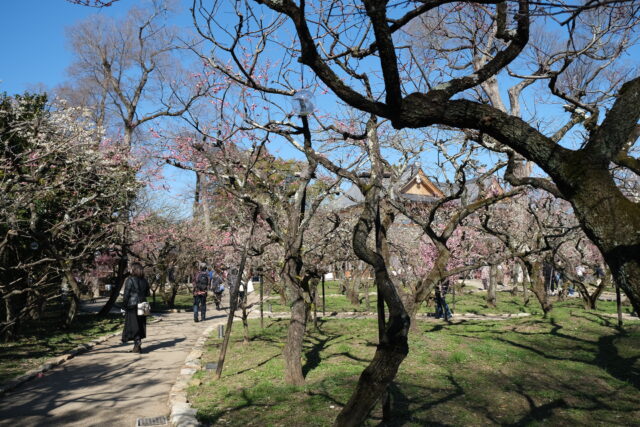
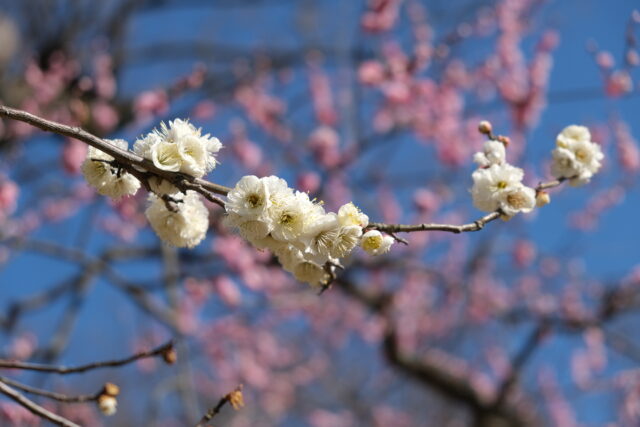
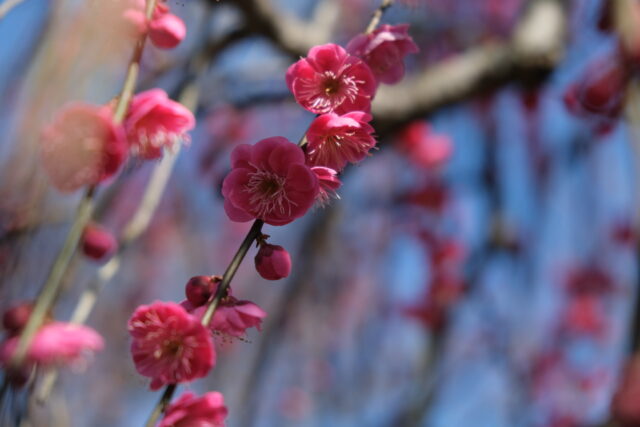


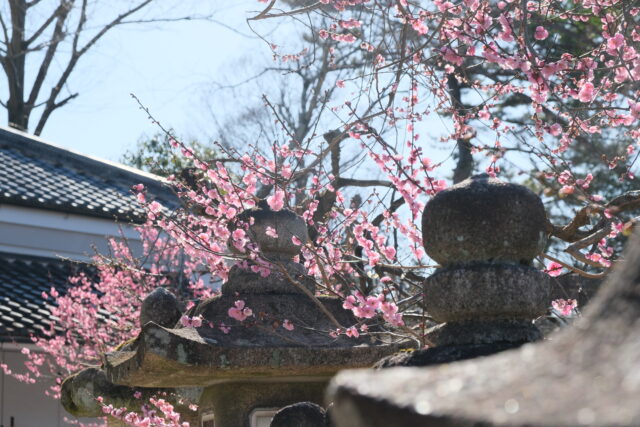

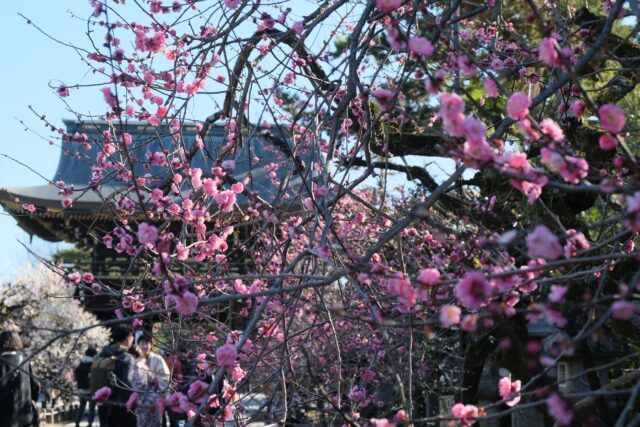
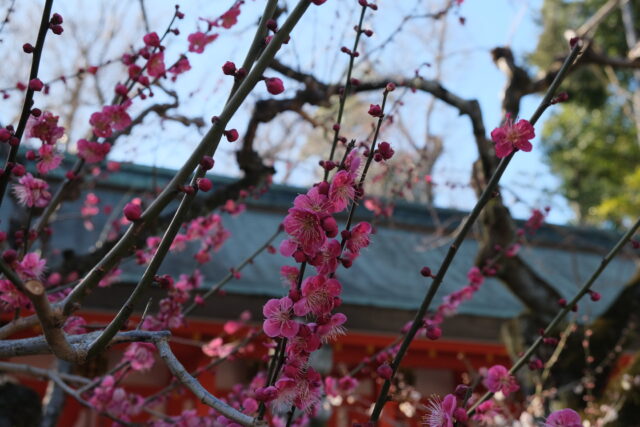
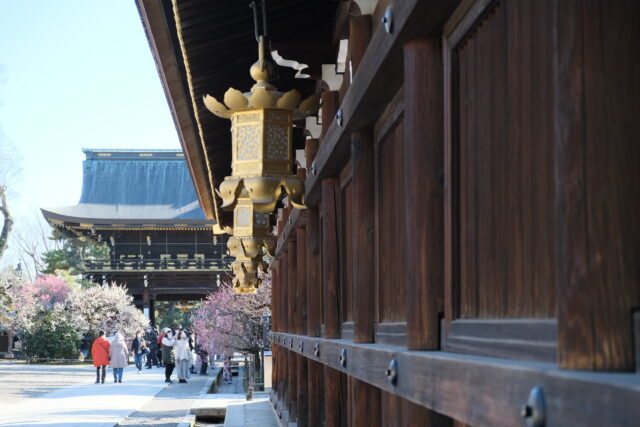
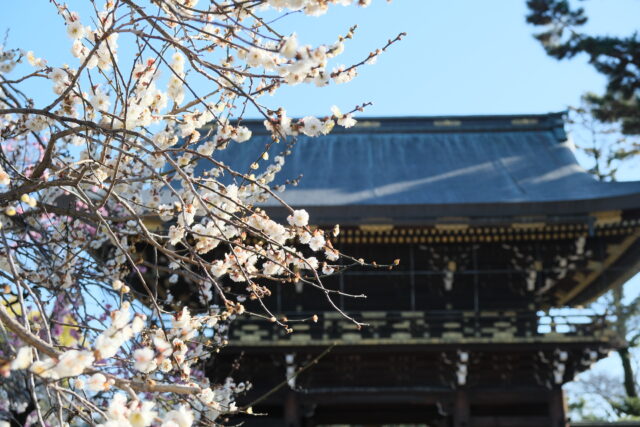



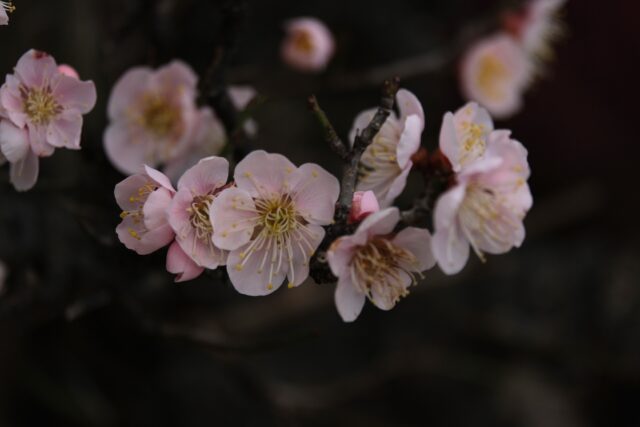




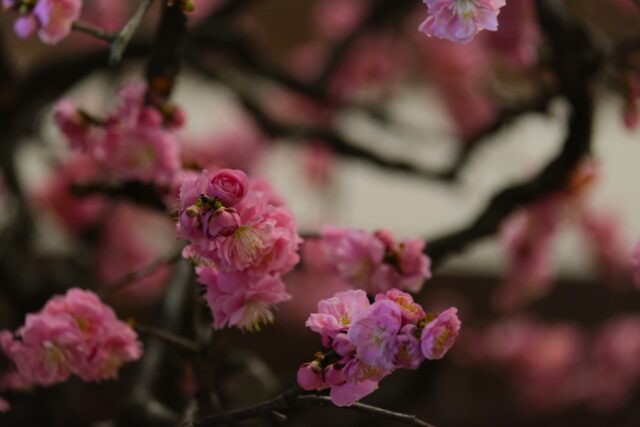

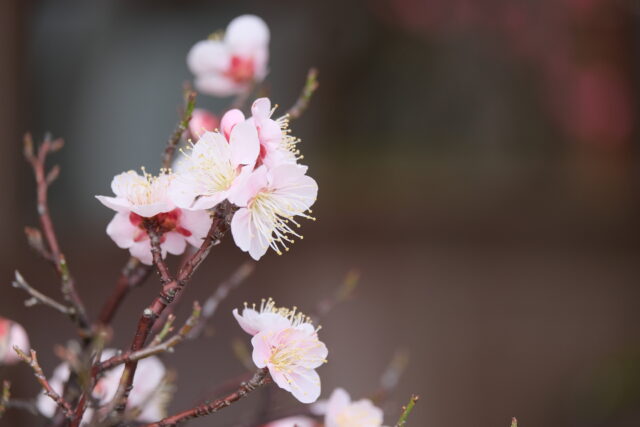









Leave a Reply